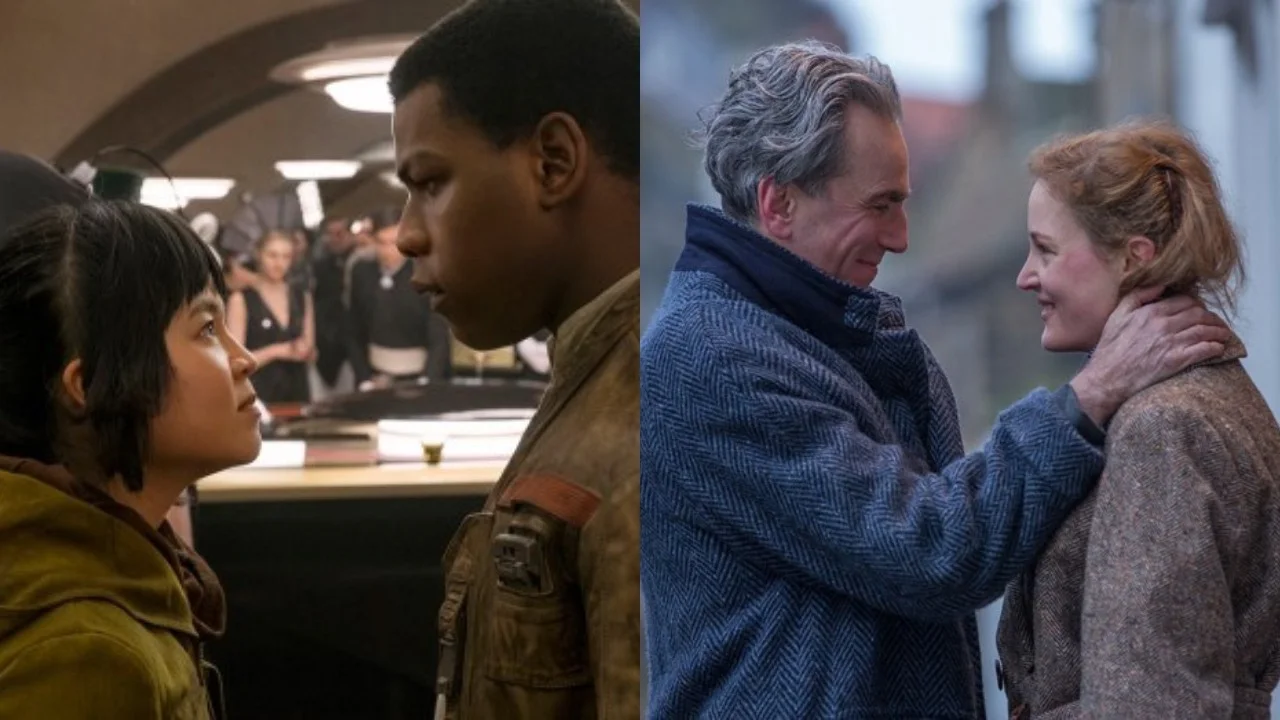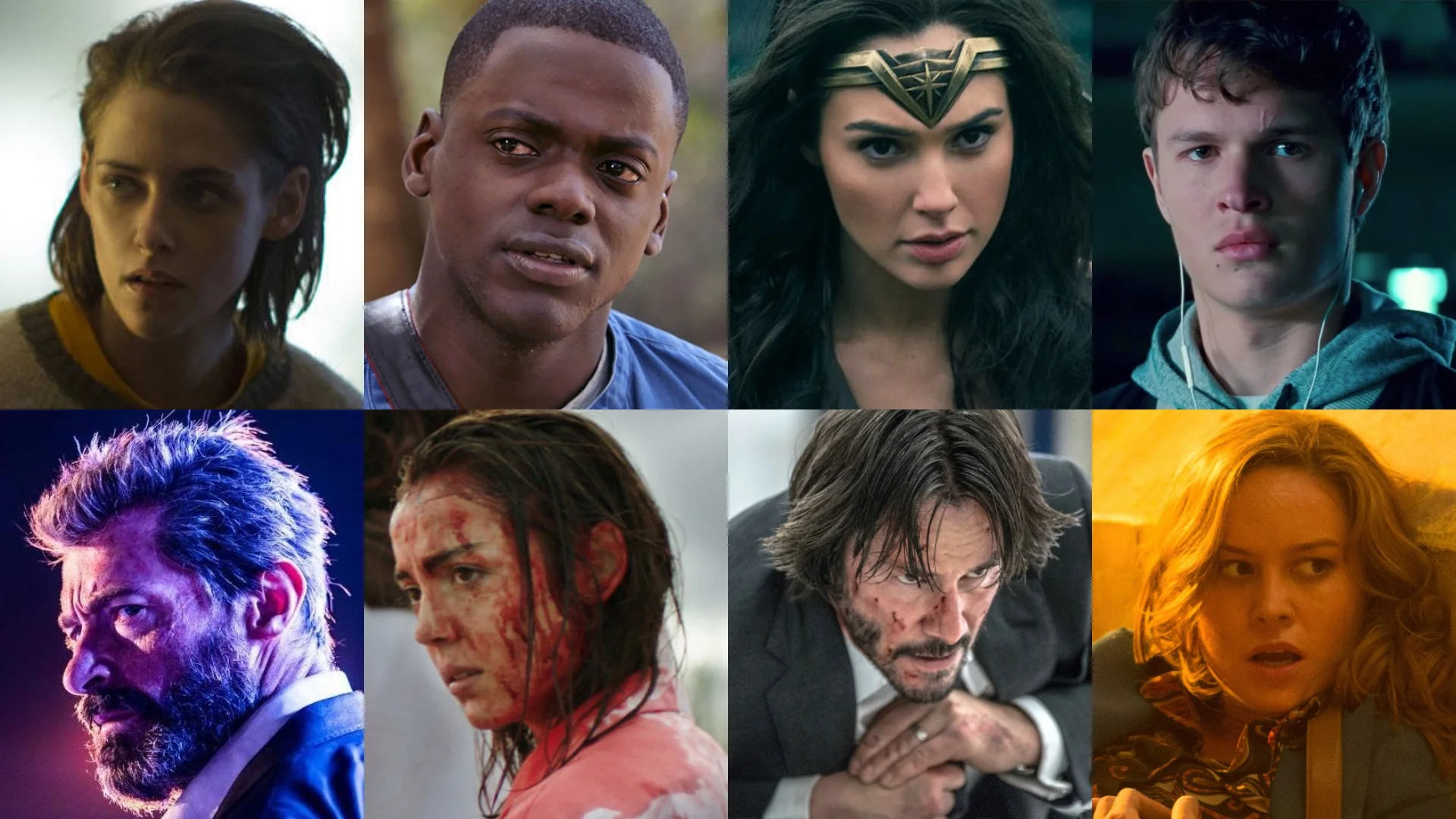Marcelo's Top Ten Movies of 2017
About two weeks ago, I was invited to see The Post at a press screening here in Austin, TX. I was excited, obviously; the film isn’t set to open here until mid-January and this would’ve crossed another must-see off my list, so that I could feel more assured about making this list. Of course, as I tend to do, I left my house later than I should have and because of traffic—but mainly due to my incompetence—I missed the screening. Oh well. I really shouldn’t complain because I live in a great area where I’m able to see so many films a lot earlier than the rest of the country. But, for me, this missed opportunity perfectly encapsulates my thoughts on the year 2017. It hasn’t been my best year, personally, and the world around us hasn’t made it any easier. But, I’ve had a few accomplishments I’m proud of (one of them is the site you’re currently reading) and the films I’ve seen this year were a life support system I needed to get through the last 12 months.
I couldn’t see everything (The Post, for example!) before my self-mandated, arbitrary deadline, but, hey, that’s the game everyone plays when writing up their end-of-the-year lists. These are my favorites of the year presented to you in a list. There is no other, this is mine.
But first, some honorable mentions.
Twin Peaks, Big Little Lies, Nathan For You: Finding Frances
Forget the “what is TV, what is a movie” discussion, credit must be given to works in a medium that have the capacity to even warrant that discussion. Big Little Lies had the creative team and stellar cast to make it more than just the typical HBO series. Nathan For You’s feature-length, season finale was a huge payoff for the series, putting a mirror up to documentary filmmaking that even Errol Morris had to take notice. And David Lynch defied expectations with his return to Twin Peaks, both satisfying our wants but also tearing down what we thought we wanted. The ‘Golden Age of TV’ could better be described as the ‘Golden age of Storytelling’, as more and more of the best stories ever are being told on the small screen.
A Ghost Story, Personal Shopper, Coco
These three stories of loss, all featuring ghosts, really hit me hard in distinct ways. A Ghost Story (my review) is both highly experimental and simple, following a ghost trying to find his way back to his true love. Personal Shopper has Kristen Stewart playing a medium/personal shopper, who receives text messages from the great beyond, possibly. And, Coco is Pixar’s latest tear-jerker, that takes our hero through the afterlife, all to keep the memories of his loved ones alive. Each film deals with the specter of death in interesting ways, and all of them succeed in making an impact on this lost soul, stumbling through the haze of 2017.
Blade Runner 2049, Star Wars: The Last Jedi, Logan
With three stories of old men hiding from the past who are unwillingly pulled into the present, sequels have reached a kind of postmodernism that defy their respective canons. Blade Runner 2049 is a long trek through the unforgiving future, where destiny is replaced with true altruism. The Last Jedi (my review) deals with similar themes, as it smartly breaks away from the legends its characters, and us as an audience, have built up for an entire generation. And Logan tackles superhero legend myths, taking Hugh Jackman’s Wolverine to his bloody, cathartic end. “Let the past die. Kill it if you have to. That's the only way to become what you were meant to be.” That line resonates with me more and more, as I think back on these old characters, and how realize how important it is to eventually move on from them.
And now, my top ten, which I present in thematic pairs (I’m predictable, I know), in no preferential order.
The Beguiled / Phantom Thread
Beyond the one plot device (you’ll know it if you’ve seen them both), these stand out as two beautifully shot films featuring women with agency—and it turns out we were lucky to many great films featuring strong women in 2017. Sofia Coppola steps away from extravagant debauchery, as seen in Marie Antoinette, Somewhere and The Bling Ring, and creates another distinct and uniquely female experience, à la The Virgin Suicides, as she creates a period piece with the backbone of a thriller. Paul Thomas Anderson’s latest is similar, as it takes us to places he’s never been to, yet it’s ultimately attuned with the rest of his work. On the surface, it’s a standard romance, but it becomes evident that Day-Lewis’ Reynold Woodcock has shades of other Anderson creations (a mix between Daniel Plainview, Lancaster Dodd, and Barry Egan), and this film itself is as idiosyncratic as anything else in his filmography. I’m totally here for the best directors working today diving into beautiful worlds and leaving their distinct stamps.
The Shape of Water / The Disaster Artist
I’m all for a movie where a bunch of weirdos coming together to accomplish a unified goal, and if that movie just so happens to make me tear up, all the better. The Disaster Artist (my review) might be the biggest surprise of the year for me; yes, I knew it was going to be hilarious, but what really took me aback was how life-affirming James Franco’s film turned out to be. His portrayal of The Room director Tommy Wiseau is astonishing, not only that, he adds humanity to a man, and a story, that has been ridiculed for over a decade. On that note, adding humanity to people and things that may not look to have any at the outset is something Guillermo del Toro does best, and The Shape of Water has that in spades. His love story between a fishman (Doug Jones) and a mute janitor (Sally Hawkins) is a balancing act of the absurd and the beautiful, and because of del Toro’s dark romanticism and gushing love of film, it works. In the end, The Shape of Water and The Disaster Artist both use cinematic touchstones we hold dearly (Creature from the Black Lagoon and James Dean, respectfully) to have us root for and fall in love with outcasts.
Get Out / Baby Driver
On a technical level, both these movies are perfect in my eyes, and on top of that they’re immensely rewatchable. Edgar Wright’s movies, for me, were designed to be watched over and over again. Baby Driver is no different; there’s a lot to admire with a first watch, but once you get into the details—I’ve seen it five times and I still don’t think I’ve caught every callback and Easter egg—there’s no denying the film is one of the most masterfully-crafted of the year. It should be in the running for every sound design, editing, cinematography, and directing award out there. I can say the exact same for Jordan Peele’s directorial debut, Get Out. Peele uses every tool at his disposal to make, not only the most visceral horror film of the year, but the smartest, relevant, and most biting film in long, long time. Baby Driver was a marvel on the big screen (I’m so happy I got to see it on 35mm), and the audience ate every little bit of Get Out—that late-night screening on a Tuesday, a full month after its initial release, was one of the most fun theater experience I’ve ever had. I’ll assuredly be adding these to my regular rotation of rewatches for years to come.
Gerald’s Game / Colossal
‘Genre films’ are pigeonholed—I mean, that’s the very definition of genre—and not too many reach the heights of ‘prestige’ films in many people’s eyes. That’s ridiculous, especially with films like IT and Get Out hitting all the right chords with audiences of all types. Colossal and Gerald’s Game (my review) are two examples of why sci-fi and horror films, respectively, have always been smartly in touch with the culture at large. Colossal has a high-concept pitch that’ll reel you in—a woman controls a kaiju—but it ends up becoming a story about accepting your shortcomings and detoxifying dangerous elements from your life. It’s a grown-up, important tale, with a Godzilla taking center stage. Meanwhile, Mike Flanagan films an unfilmable Stephen King novel—a woman (Carla Gugino) is handcuffed to her bed, trapped, after her husband dies of a heart attack during a fight in the midst of foreplay. These two films also reflect the real-life cleansing of grotesque men in power; Jessie in Gerald’s Game and Gloria in Colossal stare down their monsters and they both come out on top. We need more of these powerful women, in and out of film, in 2018.
Lady Bird / The Big Sick
While Lady Bird writer-director Greta Gerwig has said that her film isn’t as autobiographical as one would thing, the kernels of truth still sting just the same. Saoirse Ronan plays “Lady Bird” (her given name, which she gave herself), a high school senior trying to carve her own future in 2002. Gerwig’s unique presence is there in Ronan’s performance, but Ronan makes it her own, too. The actor-director pair is one of the best of the year, as they take us through some tough life lessons—young love has rarely been captured as honestly as Lady Bird’s infatuation with the aloof Kyle (Timothée Chalamet). The emotional core lies with Lady Bird’s relationship with her mother (Laurie Metcalf) and when it comes down to it, and as seemingly entitled as Lady Bird gets, she understands her where her tough-as-nails mother has been coming from. The great thing about The Big Sick is how it shows that the acceptance of parental heritage continues into adulthood. Kumail Nanjiani, playing himself, strives to make his own way as a comedian, as he both shifts away and accepts his Pakistani background. Like Lady Bird, Nanjiani and Emily V. Gordon’s script reflects real-life in a touching, effective way. While it’s a more direct retelling of their relationship and Gordon’s illness, it’s just as funny and, most importantly, just as relatable. If 2017 has reinforced anything it’s that—whether they’re set in Sacramentoin 2003 or in a Chicago emergency room—films still succeed in connecting with all of us, even through troubled times.















